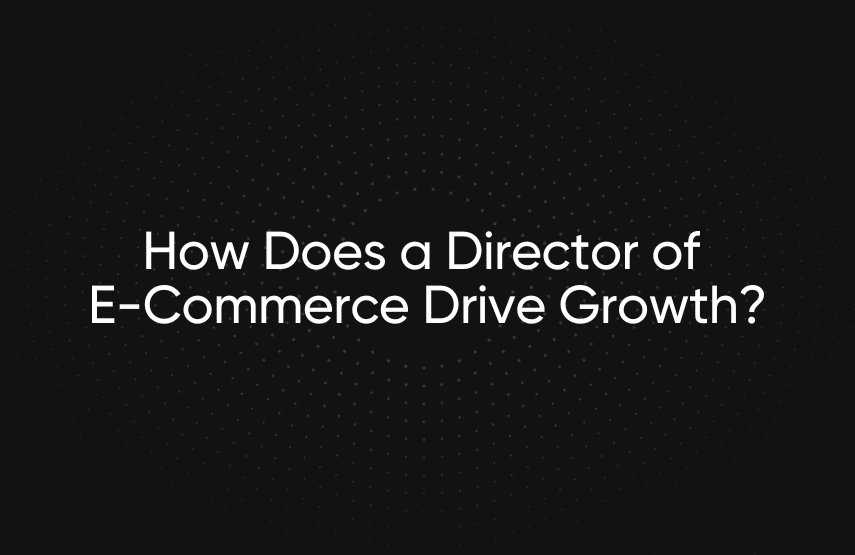How Does a Director of E-Commerce Drive Growth?

A director of e-commerce is a cross-functional position responsible for managing various aspects of an e-commerce business. The role can involve everything from business planning to website design and digital marketing.
In larger organizations, many of the duties are often segregated between different directors. This could mean a split between marketing and supply chain or a focus on a specific online channel. For example, during my time as Director of Mobile at eBay, my focus as a director was to lead mobile selling initiatives and to design strategies for optimizing the mobile customer experience.
On the other hand, in mid-market e-commerce organizations, the e-commerce director position becomes more of a generalist operator role. People who fill this role are more involved in cross-functional tasks and need to know a little bit about everything to be successful.
In this post, I’ll provide some tips that these cross-functional e-commerce directors can use to increase operational efficiency and drive growth for their organization.
[toc-embed headline=”Tips for E-Commerce Directors at Mid-Market Brands”]
Tips for E-Commerce Directors at Mid-Market Brands
Measure inputs that drive the business
Successful directors of e-commerce need to have a strong focus on input-driven metrics. Most goals are set around output metrics such as sales. But these can only be achieved through the underlying inputs that you control. You should have a deep understanding of your data to know what moves the needle. You can then use these insights to drive your inputs.
Sweat the details
Effective directors of e-commerce know the tiniest details about their product assortment including which SKUs are strong performers and which are not. This deep knowledge can help prevent missed opportunities like understocking high-performing products while overstocking low-performers.
Know your customers’ pain points
If you want to architect great experiences and provide value for customers, you must know what their pain points are and what they aim to solve by engaging with your business. These pain points become more diverse the larger your product assortment.
Create a great end-to-end experience
E-commerce directors must focus on providing a great end-to-end experience for the customer. The customer journey does not end when an order is placed. Your shipping and fulfillment must be optimized just as much as your shopping experience. A great end-to-end experience can boost brand loyalty and lead customers to buy from your business again and again.
Use instrumentation and analytics
It is important for e-commerce directors to create a funnel map that clearly illustrates marketing processes and how customers move through each channel. By actively monitoring performance analytics for each channel, you can uncover insights into how to improve your customer experience.
Be open to opportunities for expansion
Once you’ve covered the fundamentals of e-commerce, you can direct your attention to new growth opportunities. This could be syndicating your products through additional channels or expanding your assortment to include a more thorough and diverse range of products.
Be versed in different areas
E-commerce directors must develop comprehensive strategic plans for reaching the business’ objectives. This requires an understanding of multiple domains and how to prioritize your initiatives. At a large company, you may not be directly involved in the day-to-day tasks for certain areas, but knowledge of marketing, design, product, and customer experience will help you plan effectively.
[toc-embed headline=”Technology Powers Efficiency for E-Commerce Directors”]
Technology Powers Efficiency for E-Commerce Directors
Great technology is critical to executing your vision as a director. If your e-commerce tools are not up to speed, your efficiency and productivity will suffer. This ultimately leads to less time for growing the business.
A headless commerce architecture removes the tedious, slow process of managing commerce across channels. With an API-first approach, you can unify all your channels and scale your business faster.

Product @ fabric. Previously e-commerce and marketplaces @ Staples and eBay.